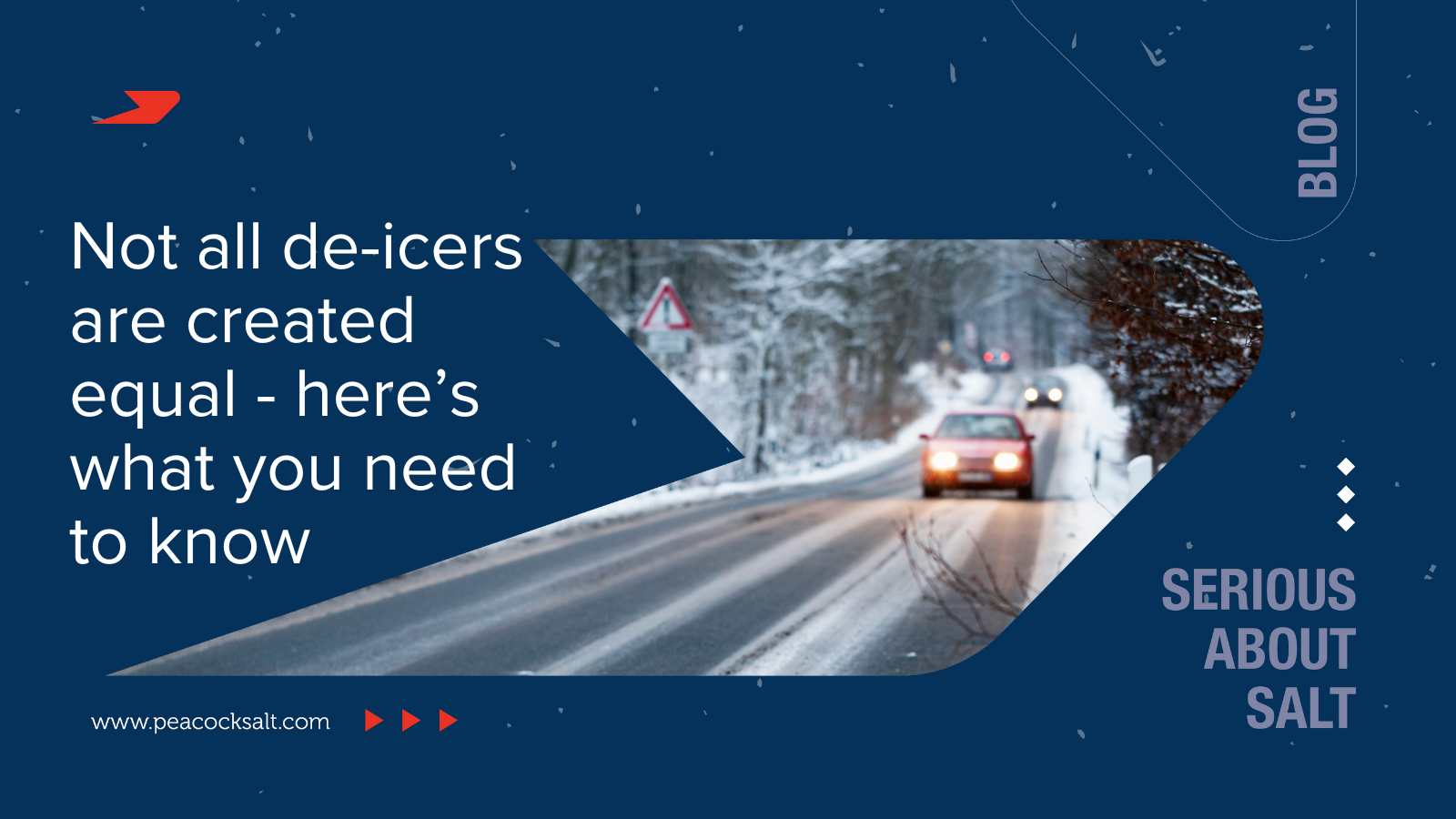
Not all de-icers are created equal - here's what you need to know
Traditional de-icers are based around Sodium Chloride. It is cheap, plentiful and in the case of marine de-icing salt, regenerative. One of the most abundant natural minerals on earth. However, it is also naturally corrosive and can have a significant impact on infrastructure such as bridges, railway stations and multi-storey car parks. Whilst, there's a time and a place for traditional sodium chloride de-icers - there are other times and other places for specialist 'chemical de-icers'. Also known as 'High Performance De-icers', they sound intimidating but exist for the purpose of de-icing where salt is not the strongest suit in the deck. There are low temperature, low and non-corrosive, environmental and concrete-friendly options.
Where price is usually the immediate concern when choosing a de-icer, the long-term implications of improper use are much more costly. Looking specifically at corrosion, there are several different non-corrosive de-icers which are used in the UK. The most common are Formates, Acetates, Urea, and Glycol-based de-icers. But how do each of them measure up?
What are Formates?
Formates, which come in liquid and granular form, are the salt of formic acid. And, to those of us in the salt business, they are known to be some of the most effective and commonly used de-icers in Europe. One of the best features of Formates as a de-icer is that not only do they melt ice extremely quickly, but they actually prevent the formation of snow, frost, and ice layers – if spread before they form.
There are heaps of other benefits too:
- They’re readily biodegradable and non-toxic for humans, animals, water organisms, and plants.
- They come with a low chemical oxygen demand, which is better for any marine environment or vegetation that it may come into contact with.
- It’s free from salt.
- It’s safe to use on concrete, most metals, and polymers too.
Even better – Formates come in liquid and granular form, each of which suits different needs, but you can also use both together for an incredibly effective thaw.
What are Acetates?
Before the various benefits of Formates were truly realised, Acetates were the most commonly used non-corrosive de-icers in Europe.
Whilst they’re certainly better for the environment than chloride-based products, they do have a higher chemical oxygen demand than formates – which can degrade surrounding marine or vegetation environments to a greater extent.
What are Urea-based de-icers?
Urea is an organic compound derived from natural gas and comprising 46% Nitrogen – it is widely used as the key component for many Nitrogen-based de-icers. It is also a common ingredient in many fertilisers.
Urea-based de-icers are quite a common choice in areas where the corrosive effects of chloride-based cannot be tolerated whatsoever, for example on elevated walkways, railways, and in airports. Its common usage is also perhaps due to the fact that it’s less expensive than Acetates and Formates, but it is only moderately effective by comparison.
The high proportion of Nitrogen contained in these de-icers is now widely recognised to burn vegetation and cause damage to the environment. The use of Urea releases Ammonia in amounts that can create a toxic environment for ecosystems and living organisms – a side-effect that is making it significantly less popular. Whilst there are still key uses for urea-based de-icers, it is used with caution.
What are Glycol-based de-icers?
Glycol-based de-icers which contain Propylene Glycol or Ethylene Glycol were, in the past, popular choices for use on aircraft. Like many of their counterparts, they are quite efficient at lowering the freezing point of water but have more recently become less popular due to their damaging effects on the environment and their high toxicity. These effects are so stark, that now when used on aircraft, the ‘runoff’ of these de-icers needs to be collected and stored, creating a higher operational and financial burden to companies.
Both Formates and Acetates provide highly effective alternatives with even more non-corrosive benefits and given their significantly improved environmental credentials – create far less of an operational burden for businesses.
Looking for more information?
Which de-icer you choose depends entirely on your needs. But there is a reason that Formates are becoming increasingly popular across the continent. For us here in the UK, the low chemical oxygen demand and effective temperatures of Formates are perfectly suited – it’s been our recommendation to many of our clients for these exact reasons. If you want to find out more, get in touch to pick the brains of our resident salt experts.










